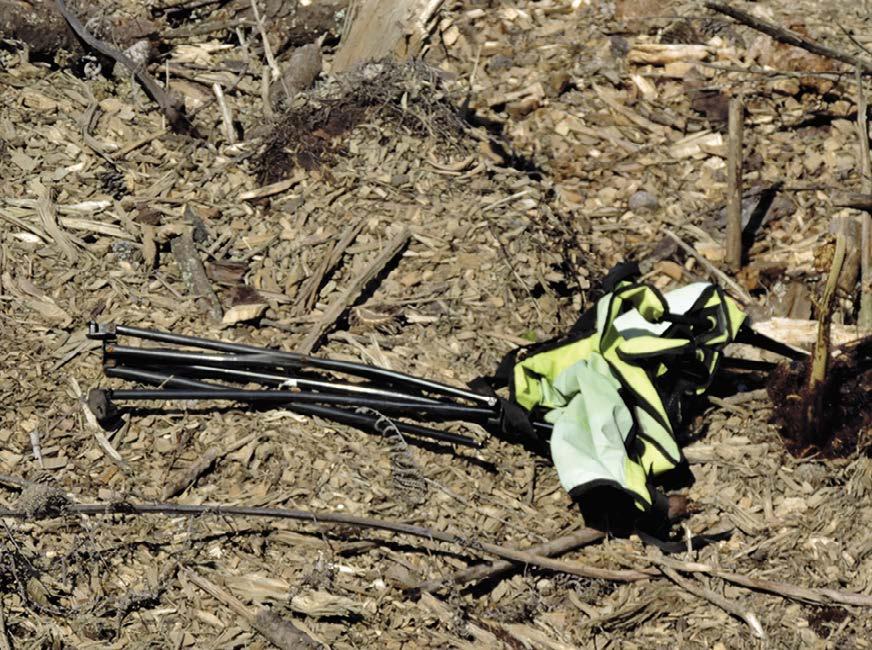
4 minute read
LETTERS & EMAILS
LETTERS & EMAILS THE FAKE NEWS FACTS IN THE MAUNGA TREE DEBATE Mark Graham’s “The Question of Trees” article in your last issue was riddled with inaccuracies about the maunga (volcanic cone) tree situation. Here are the facts to his article’s many fictions:
Fiction: Keeping the maunga exotics prevents natives being planted. Fact: Planting plans show, for the most part, natives will not be planted in areas currently inhabited by non-native trees, so there is no environmental reason why the non-natives cannot stay. Keeping them will provide windbreaks for the native plantings, and ongoing protection for the multitude of self-sown native seedlings already growing under their protective cover.
Fiction: They are Mana Whenua’s maunga; they can do what they want with them. Fact: The maunga are owned by collective of 13 iwi and hapū but the Treaty settlement required them to be held in trust for the benefit of that collective and “all other people of Auckland”. They cannot be sold or developed as housing, and are subject to Reserves Act provisions. The collective’s decision to make the maunga accessible to everyone was a pragmatic one because the Treaty settlement would have stalled without that guarantee.
Fiction: Just because the public are allowed to access the maunga does not mean they can decide what happens on it. Fact: The Authority administers the maunga lands but does not own them. It is a ratepayer-funded co-governance organisation. Half of its members are Auckland Council representatives who are appointed to represent all Auckland residents. If they must not have any say on behalf of the public, then why are they there? This question drives to the heart of what the “co” in co-governance actually means.
Fiction: The Authority’s plans will result in “oases of stunning native forest stands dotted across our city”. Fact: Planting plans show there is no intention to “cloak” Tāmaki Makaurau’s maunga in forests. Instead, there will be limited areas of plantings largely comprising low-growing species such as grasses, flaxes and shrubs. The end result will be mostly bare looking maunga with small areas of intensive plantings on the lower slopes.
Documents show the Authority intends for the maunga eventually to look like the bare pa sites of old.
Fiction: If you want to save the maunga trees then you must be a racist. Fact: Maunga tree protectors come from all ethnicities and walks of life, including Māori. If standing up for Papatūānuku /Mother Earth automatically qualifies us all as racists, then so be it.
Fiction: Retaining the non-natives is retaining an “archaic colonist ideal”. Fact: What utter nonsense – just ask the tūī, kereru (wood pigeon), kākā, rurū (morepork) and pīwakawaka (fantail) who routinely use the maunga non-natives as food, homes and shelter. Where does Mr Graham think they are going to live, roost and eat in the 50-100 years it will take for the tiny number of newly-planted native tree species to reach maturity?
Non-native trees aren’t “colonist ideals”; they are trees; trees that help mitigate climate change and provide us all with oxygen.
Anna Radford, Honourthemaunga.org.nz, Ōwairaka/Mt Albert RUBBISH IN WESTERN SPRINGS FOREST I have recently visited Western Springs Forest now that it has been re-opened to the public and what I observed was rather disturbing. Not only is it devastating to see such a huge gap in the forest after the destruction of the mostly healthy pines and huge amounts of the natives, but the amount of debris and chip on site is concerning.
I am also appalled at the amount of rubbish - paint cans/trays, bottles, drink and spray cans, plastic rubbish, numerous pieces of rusting tin AND a folding chair which I believe belonged to one of the Red Badge Security staff, who was sitting on it whilst observing the excavator tearing down the forest. I find it abhorrent that it was left on site ignored by Council staff, the contractors (Treescape), Red Badge and the Ecologists (Wildlands) supervising the planting.
I have visited the forest on numerous occasions over the years, being a local resident, and photographer. It was my happy place. There is no longer a forest. With the big hole in the centre of the bush, the enormous impact on the natives means that there are obviously fewer birds. They are now mainly around the edges where there weren't trees felled.
One would presume that the new stairs and sealing of the track would make walking safer, but that has not been the case. Whilst going up the path the other day, I had to step aside off the walking track, as a cyclist came hurtling down. It gave me a fright. I nearly got bowled over as I hadn't see him coming. He had bounced down the dozen steps on his race to the bottom. Gone was the feeling of a forest full of life, and I felt I as if was on a dangerous sports track!
Sharon Jones, Local resident

LETTERS CONTINUED ON P20










